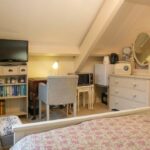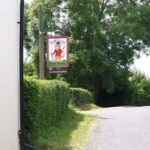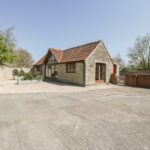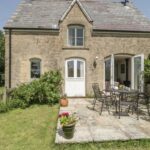Bruton is basically an old Saxon settlement but there are various other sites recorded from the Celtic and Dark Ages. There are indications that the Romans passed through on their way to the Mendip lead mines.

The first Saxon church was built at the end of the 7th century and a mint is recorded in the time of King Canute. In the Domesday Book, the settlement is described as “Briuuetone”, which means a fast river enclosure and indicates that this was an important farming area.
Agriculture is still an important local industry today. Around 1330, cloth weavers came to Somerset and Bruton grew rich on wool. The magnificent St Mary’s Church dates from this time, famous for its twin towers and known as one of the finest perpendicular churches.
Some buildings have survived from the time when Bruton was at the height of its heyday with both the wool and the silk industries. There are the attractive Jacobean Almshouses, with the Elizabethan chapel in the courtyard, and narrow alleyways, known as Bartons, which link the town’s high street with the River Brue. There is a 15th century packhorse bridge and a ford across the river. Although the early industries have long disappeared, it was during their time that Bruton became known as a centre for education. The Grammar School was founded in the 16th century and there has been a tradition of education here ever since. Four well-known schools are sited here today.
There was originally a Priory on the hill south of the town. This was replaced by a mansion, which was abandoned in the 18th century. Today only the interesting dovecot remains in the original parkland overlooking the town.
There is plenty to see and do in Bruton today. The local museum displays many interesting artefacts from the town’s varied history. There are also several light and sound displays featuring local history. There is also a local Heritage Trail, a riverside walk and footpath trails. The town has plenty of cafés, pubs and accommodation, in addition to a variety of small shops. Each year Bruton holds a Festival of Arts to publicise the work of local artists.





